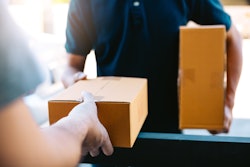
Walk into any grocery store in the United States, and it’s unlikely you’ll venture more than 1-2 aisles before encountering a food labeled “clean” or “organic.” That’s because today’s consumers are paying closer attention to the ingredients in their food than ever before. There’s demand for food with fewer additives, preservatives and/or fillers. On the other side of the same coin, consumers are requiring more visibility into their food’s ingredient orgin and foods with cleaner ingredients that are certified organic or non-GMO.
With this higher demand and the higher cost to manufacture these goods comes higher prices; consumers should be able to trust the brands they’re buying are properly labeling their organic products. Unfortunately, that’s not always the case. According to the Food and Drug Administration, food and beverage fraud affects nearly 1% of the industry, costing $10-15 billion per year, with some estimates placing it up to $40 billion. Food and beverage fraud can occur when an input supplier somewhere along the food and beverage supply chain swaps out a more expensive ingredient for a cheaper substitute, passing the good off as “clean” and pocketing the extra revenue or reduced manufacturing cost.
Typically these types of concerns come to high-value goods, such as purses and clothing, but it’s become easier for fraudulent ingredients to find their way into the food and beverage supply chain. The good news is, the same types of technology often used to verify the authenticity of high-valued goods are now being used to root out deception on the supermarket shelf. Let’s take a look at the tools making a difference in the fight against food and beverage fraud.
Why the focus on technology?
In short, because the supply chain has become far more complicated than it was even 10 years ago, many of the products that reach store shelves globally have touched multiple nodes in the supply chain. With raw materials collected from multiple suppliers, mixing of materials/ingredients occurring at one (or more) suppliers and packaging occurring at another supplier.
Anti-counterfeit and authentication tools can help take the mystery out of the manufacturing and transportation process. By working with their suppliers to tag goods at each supply chain node, food and beverage manufacturers can track which ingredients were added to each product and where. Such end-to-end data visibility is critical when irregularities are detected within the supply chain; it allows the manufacturer to go back and inspect each supplier to quickly determine where imposter ingredients were added to the product.
It's also important that when counterfeit goods are discovered, the manufacturer is quick to inform consumers of the concern and issue a recall or refund for food and beverage sold with false labeling. Authentication tools allow manufacturers to quickly pinpoint which stores received the tainted products, allowing quick removal of counterfeit items from shelves and effective notification of impacted consumers.
Why is this important for the industry?
In the era of innovative customer experiences, authentication tools are more than a nice-to-have. Consumers expect transparency from their favorite brands, so allowing them to walk into a store, scan a code in front of a product and see its entire journey through the supply chain is an excellent way to build trust and loyalty.
From the brand perspective, this level of transparency can help protect reputation; if a manufacturer input supplier is improperly accused of adding fraudulent ingredients, authentication tools allow the accused business to clear its name. And by investigating and determining the counterfeit ingredients quickly, the manufacturer itself can recover more quickly from any reputation hit it takes by the initial announcement of a fraud.
It's also important that in the event of a recall, food and beverage manufacturers work to mitigate financial impact for both themselves and for their input suppliers. Authentication tools help manufacturers quickly figure out where counterfeit products reached stores. This helps manufacturers avoid an otherwise costly and time-consuming investigation across the supply chain and allows stores to keep authentic products on shelves and avoid lost revenue.
Authenticity is key
Achieving end-to-end supply chain visibility through authenticity tools can help food and beverage manufacturers identify problem spots within their supply chain and build trust with their customer base, but waiting to explore these tools until there’s an issue is far too late. Its vital authenticity technology be seen as a preemptive measure. The question is not if, but when.
Implementing authenticity technology is not a difficult process and the benefits are numerous. Such tools give customer reassurance that when they put that organic product in their cart, they’re getting the premium product they paid for.



















